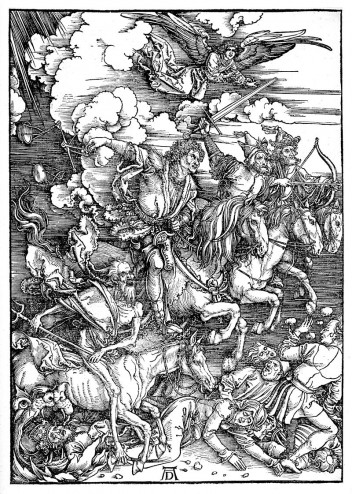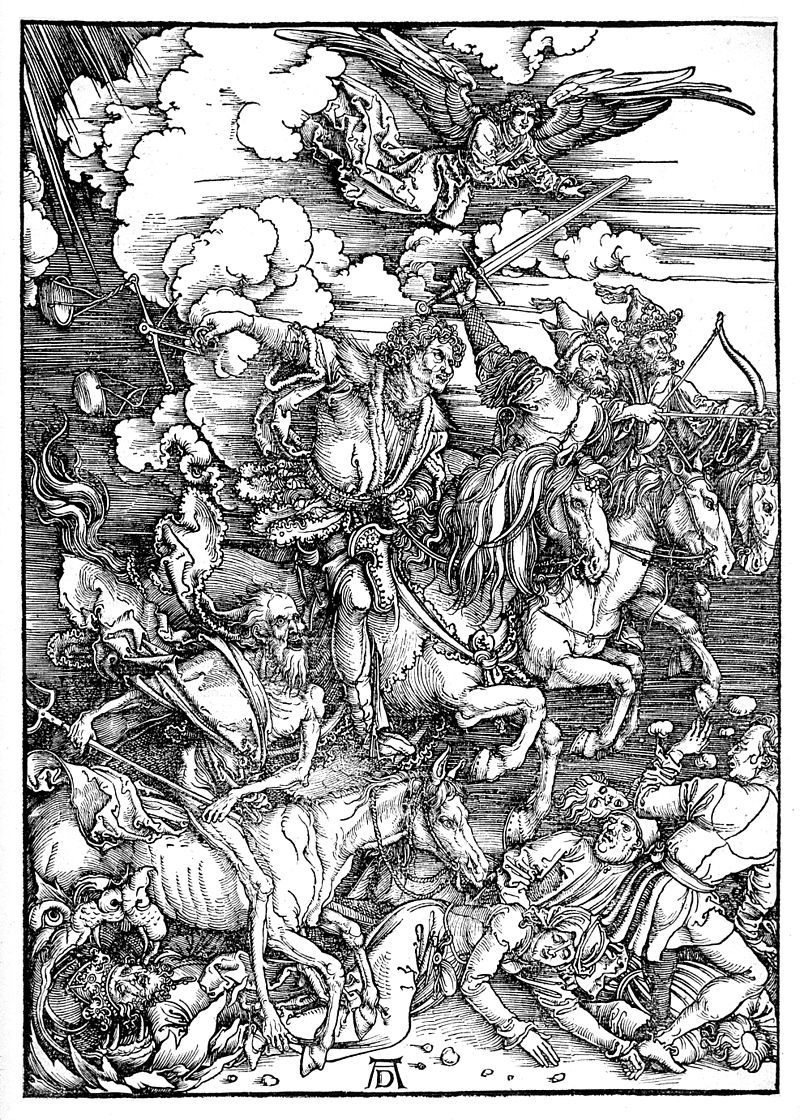
Albrecht Dürer fancied himself a great painter before anything else; however, it was his printmaking that became his major contribution to the history of art. What he was able to accomplish using only black and white is astonishing, and on a purely technical level his achievements are unparalleled.
Dürer’s The Four Horsemen of the Apocalypse is a woodcut. With this technique, everything that is white in the print was cut away from the surface of a block of wood. The black lines show the forms that are left on the surface and inked before the block is pulled through the printing press. Because of the fragile nature of the wood, the artist could not make any lines that are too long or too thin – they simply would break right off.
Regardless of the limitations of this printmaking technique, Dürer managed to create a scene that bursts with energy within a three-dimensional setting. What’s more, Dürer carved out many different shapes of line that suggest solid form. He also carved thin white spaces between parallel lines. This is called hatching and normally was a technique only used in drawing. With the tangled web of curved and straight lines that moves like a mass of worms wiggling on the surface, Dürer really was showing off.
The subject here comes from the book of Revelations. Death arrives on a white horse, Famine holds the scales, War brandishes a sword, and Plague readies with his bow and arrow. They bring death and devastation, but are only precursors of the judgments that will come.
More woodcuts by Albrecht Dürer
[nggallery id=17]
Recommended Reading


